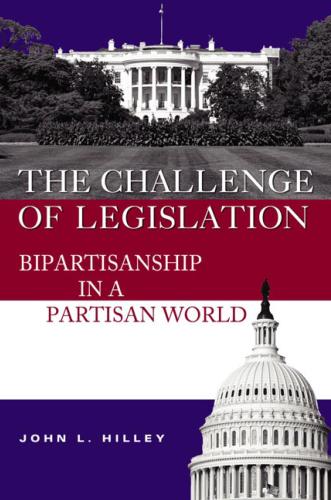This article originally appeared on Real Clear Markets on June 12, 2016.
Sniffing for scandal, guffawing at gaffes, tittering at tweets, many commentators, especially those on the political left, dismissed the recently released Trump administration’s budget as ‘dead on arrival.’ How wrong they are! Every president has great power when it comes to budget negotiations. That power is enhanced when, as now, the president’s party controls both houses of Congress.
It is easy to understand why many thought that the Trump budget would fail. Until recently, one Republican senator after another exuded pessimism that the GOP could deliver on its top priority, to repeal and replace Obamacare. Prospects for genuine tax reform, if anything, seemed even worse. Divisions among Republicans on tax policy run deep, and they were—and are—getting no leadership from a still-understaffed Administration that released a one-page, 15-line, statement of tax policy intent that it calls a ‘plan.’ Perhaps the most important reason for the ‘dead-on-arrival’ pronouncements was the sheer savagery of the budget itself, which proposed to carve three-fifths of the proposed $4.3 trillion cuts in spending from programs that serve people with low and moderate incomes.
The abrupt revival of prospects for repealing Obamacare should wake up those who think that the rest of the budget initiatives are dead. Republican Senators initially expressed revulsion at the House-passed American Health Care Act because it would snatch health insurance coverage from 23 million people and weaken coverage for tens of millions more. Revulsion notwithstanding, Republican senators now appear to be falling into line behind an emerging Senate bill that promises to do pretty much what the House bill did, just more slowly.
Enacting other elements of the Trump budget poses fewer challenges. Even if Donald Trump’s self-guided safari into the wilds of governmental chaos continues, much of his budget could still become law. The key is the Senate rule that protects from filibuster legislation that implements instructions in a budget resolution directing Congressional committees to achieve certain spending and revenue targets. If the named committees do not deliver, a so-called ‘reconciliation bill’ cannot be filibustered, which means it can pass the Senate by a simple majority.
Even if Donald Trump’s self-guided safari into the wilds of governmental chaos continues, much of his budget could still become law.
To see why ‘reconciliation’ dramatically improves prospects for the Trump budget, consider his proposal to cut Supplemental Nutrition Assistance Program (SNAP, the new name for Food Stamps). Under SNAP, the federal government provides low-income families and individuals with debit cards for food purchases. In 2016, SNAP benefits, averaging $1.40 per person per meal, went to 44 million low-income Americans at an annual cost of $71 billion. SNAP participation peaked at 50 million during the recession, but has trended down since then.
The Trump budget proposes to cut SNAP spending by $190 billion over ten years. Most of the savings would result because some program costs would be shifted to states—10 percent in 2020, rising to 25 percent in 2023. This cost shift would save the federal budget an estimated $116 billion over ten years. Various other changes would cut federal spending an additional $74 billion over ten years. One would extend work requirements in current law, so that SNAP recipients could receive benefits for only three months every three years if they did not work, even in states with unemployment rates up to 10 percent and that did not provide work opportunities. That change would deny benefits to roughly 1 million people. Another would terminate the SNAP minimum benefit, $16 per month, for 2 million people, mostly elderly or disabled recipients.
The budget does not indicate directly whether states could afford to take on these costs. Indirectly, it suggests that they could not—or would not—as the proposed statute would authorize states to cut benefits, something that current law bars. The pressure on states to cut benefits would be particularly severe during recessions, when the number of applicants rises and state revenues fall.
Similar SNAP cuts have long been a staple of House Republican budgets. But most of the 46 Democrats and two Independents who caucus with them would oppose the cuts. If a filibuster were allowed, the 52 Senate Republicans would find themselves well short of the 60 votes needed to shut off debate.
The same is true of the $610 billion in cuts to Medicaid spending that the Trump budget calls for—cuts which are in addition to reductions of $834 billion contained in the American Health Care Act. House Republicans have repeatedly proposed to convert Medicaid into a block grant at greatly reduced spending levels. During the Obama administration, Republican Congressional leadership knew that they could not override an inevitable presidential veto. Faced with sure defeat, a frustrated Republican-controlled Congress never put a bill to change the structure of Medicaid on the president’s desk.
Now, with Donald Trump in the White House, Republican Congressional leaders know that if Congress passes Medicaid restructuring and cuts spending, the president will sign the bill. Budget reconciliation enables them to do so.
The same rules that will let Congress cut SNAP and restructure and cut Medicaid apply to other elements of the Trump budget. Most can be packaged in a single bill, passed by a simple majority in each house of Congress, and sent to a president who will sign it into law.
It remains possible that a small number of Senate Republicans will find the depth and harshness of proposed budget cuts unacceptable. After all, the defection of even three Republicans on a budget reconciliation bill, along with united Democratic opposition, would be enough defeat it. But disdain for many aspects of the Trump administration should cause no one to underestimate the capacity of a party that controls both Houses of Congress and the White House to achieve its budget goals. Whether or not the Trump budget was dead on arrival and whether or not it is good for the country, it alive and kicking now.
The Brookings Institution is committed to quality, independence, and impact.
We are supported by a diverse array of funders. In line with our values and policies, each Brookings publication represents the sole views of its author(s).








Commentary
Op-edDon’t be fooled, Trump’s budget proposal is very much ‘undead’
June 12, 2017